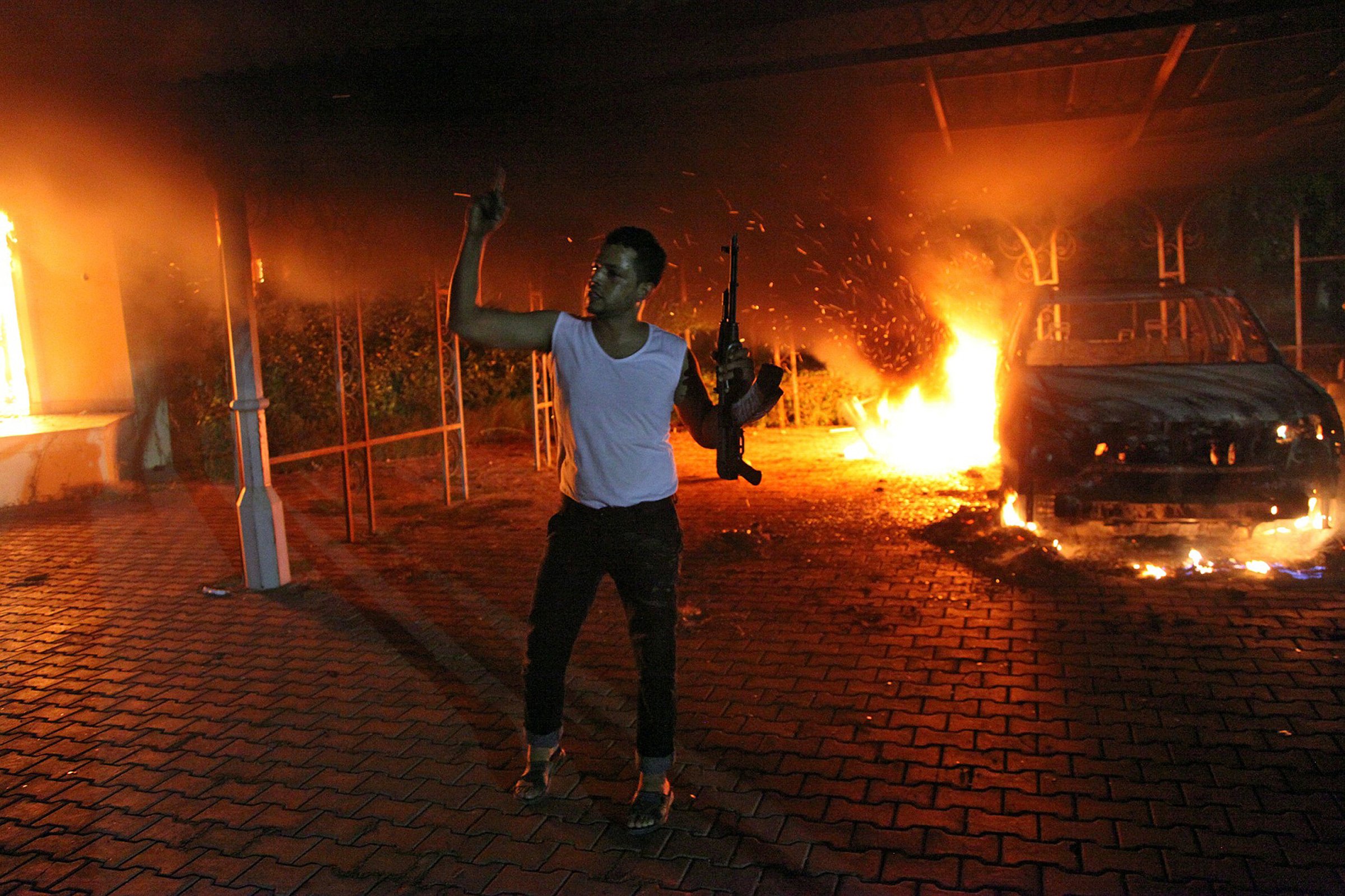
It was most assuredly an act of war. Insurgent Libyans, some plainly inspired by, if not directly linked to al Qaeda, attacked sovereign U.S. territory in Benghazi on Sep. 11, 2012. In two separate strikes on diplomatic outposts in that eastern Libyan city, they killed the U.S. ambassador to Libya, Christopher Stevens, computer expert Sean Smith, and embassy security personnel (and former Navy SEALs) Glen Doherty and Tyrone Woods.
In the 16 months since, the perpetrators remain at large. What is becoming clear is that the U.S. has tied its own hands in trying to bring those responsible to justice.
“The individuals related in the Benghazi attack, those that we believe were either participants or leadership of it, are not authorized use of military force,” Army General Martin Dempsey, the chairman of the Joint Chiefs of Staff, told a top-secret hearing of the House Armed Services Committee Oct. 10.
Dempsey said the U.S. military could do little more than act like a sheriff’s posse, sent out to round up suspects.
“In other words, they don’t fall under the AUMF [Authorization for Use of Military Force] authorized by the Congress of the United States,” Dempsey continued, in testimony declassified Jan. 13. “So we would not have the capability to simply find them and kill them, either with a remotely-piloted aircraft or with an assault on the ground.”
Apparently, amid a new kind of war featuring non-state actors, the U.S. military—and, more critically, the government directing it—remain stuck in the past, where each side wears unique uniforms and complies with the Geneva Conventions.
Katherine Zimmerman of the American Enterprise Institute, writing in Sunday’s Washington Post, warns that Dempsey’s narrow definition of terrorists covered by the authorization, specifically focused on amorphous groups like al Qaeda, “effectively precludes a military response.”
“You have a mix of folks who are just troublemakers,” President Obama said in an interview with Fox during its broadcast of the Super Bowl Sunday night. “You have folks who have an ideological agenda, you have some who are affiliated with terrorist organizations.”
Two days after the armed services committee released Dempsey’s testimony, the Senate Intelligence Committee released its probe into the attack, which concluded it could have been anticipated, and prevented. Sen. Diane Feinstein (D-Calif.), chairwoman of the intelligence panel, said that the nation must “bring…the attackers to justice.”
“The Intelligence Community has identified several individuals responsible for the attacks,” the committee said. “Some of the individuals have been identified with a strong level of confidence.”
So what’s supposed to happen next? “They will have to be captured,” Dempsey said. “We would, when asked, provide capture options to do that.”
Capture options?
Earlier in the same session, Dempsey expressed his anger over feeling helpless as the Benghazi attack took place. “Let me assure you that you there’s nothing more heart wrenching and frustrating than to watch something unfold someplace,” he said, “and not have the ability to do anything about it.”
But once it has happened, what is the proper U.S. response? For starters, the nation might want to stretch that Authorization for Use of Military Force to include those who carried out the Benghazi attack. After all, the real issue isn’t whether or not the insurgents are covered by the original AUMF, passed by Congress on Sept. 14, 2001, with a goal “to deter and pre-empt any future acts of terrorism or aggression against the United States.” It’s why the language hasn’t been changed to make clear that the Benghazi attackers—and anyone else like them—are in the crosshairs of the U.S. military.
More Must-Reads from TIME
- L.A. Fires Show Reality of 1.5°C of Warming
- Home Losses From L.A. Fires Hasten ‘An Uninsurable Future’
- The Women Refusing to Participate in Trump’s Economy
- Bad Bunny On Heartbreak and New Album
- How to Dress Warmly for Cold Weather
- We’re Lucky to Have Been Alive in the Age of David Lynch
- The Motivational Trick That Makes You Exercise Harder
- Column: No One Won The War in Gaza
Contact us at letters@time.com